There are so many cities in Italy worth visiting, yet so many tourists head to the same ones over and over: Rome, Florence, Venice, Milan, Naples. These cities are fantastic, but they are far from everything Italy has to offer.
Over the years I’ve fallen hard for Bologna, Palermo, Naples, and Parma, just to start! And it seems like a new city every month!
What I wish more people knew about Italy was just how diverse its cities can be. Italy wasn’t even unified until 1861 — I promise you, stately Swiss-flavored Torino feels like a different country than wild, volcano-adjacent Catania! Even quiet, mountain-surrounded Trento (I met my husband there!) is a far cry from chic, modern Milan, not too far away.
So whichever region of Italy you choose to explore, whether Tuscany or Puglia or Piemonte, I encourage you to get into some cities that you didn’t know much about beforehand. The most famous cities in Italy don’t tell the full story, and in the smaller cities of Italy, there’s quite a bit of adventure waiting for you.
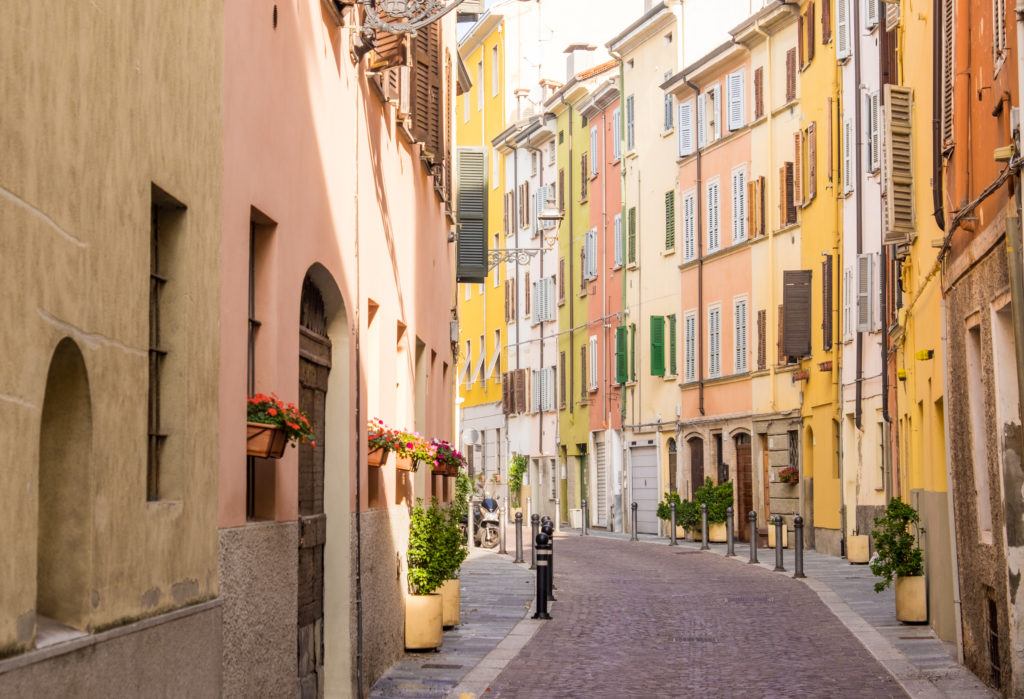
Best Cities in Italy to Visit
What are the quintessential cities in Italy to visit?
Of course, you need to visit Rome, Florence, Venice, Milan, and Naples to round out the quintessential cities of Italy!
What are some nice smaller cities in Italy to visit?
If you’re a fan of smaller, more compact cities, I recommend visiting Parma, Perugia, Lucca, or Lecce, which are much calmer and more low-key.
What are some good cities in southern Italy to visit?
The north gets so much attention, but the south is sizzling! Don’t overlook Naples or Salerno in Campania, Lecce or Bari in Puglia, Matera in Basilicata, or Siracusa or Palermo in Sicily.
What are some off the beaten path cities in Italy to visit?
Want to avoid the tourist crowds? Head to Aosta, Salerno, Genoa, Viterbo, or Trieste, which are decently off the tourist trail.
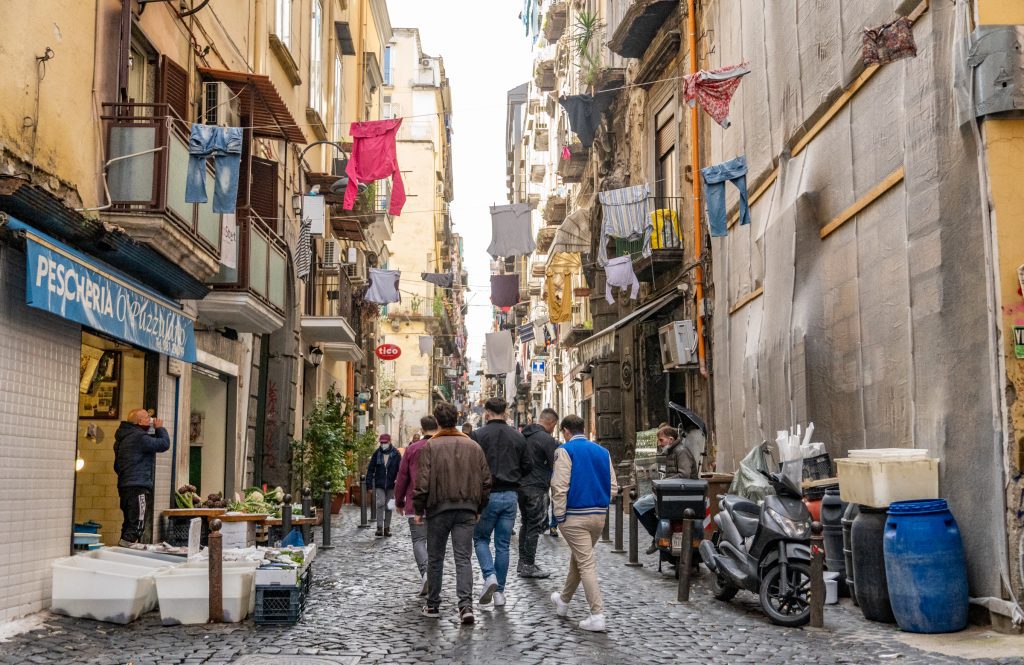
Naples
Naples is wild, brash, and more fun than you thought a city could be. The third-largest city in Italy and unofficial capital of the south is famous for pizza and pastries, underground tunnels and royal palaces, stunning churches and some of the most vibrant street life you’ll find in the country.
Naples has a bit of a reputation for being a bit loud, a bit dirty, a bit freewheeling. Don’t let that stop you — Naples’ utter lack of pretension makes it one of the most down-to-Earth places to visit in the country! And you get excellent value for money here.
One of the most unforgettable experiences in Naples is to go all in on pizza. Of course, Naples is where pizza was first created, and here you have access to the best ingredients, from buffalo mozzarella from the nearby Cilento region to San Marzano tomatoes grown on Mount Vesuvius.
My favorite pizza spots are two of the most famous ones — Pizzeria Da Michele and Sorbillo! And if you want to try your hand at making pizza yourself, there are plenty of fun pizza-making classes.
Naples also makes a superb hub for day trips throughout Campania, from the ruins of Pompeii and Herculaneum to the stunning Amalfi Coast to the islands of Capri, Ischia and Procida.
Where to Stay in Naples: One of my favorite mid-range places to stay is Sanfelice 33 Luxury Suites, which is close to the historic center of the city with colorful, modern rooms and balconies looking over the vibrant street life.
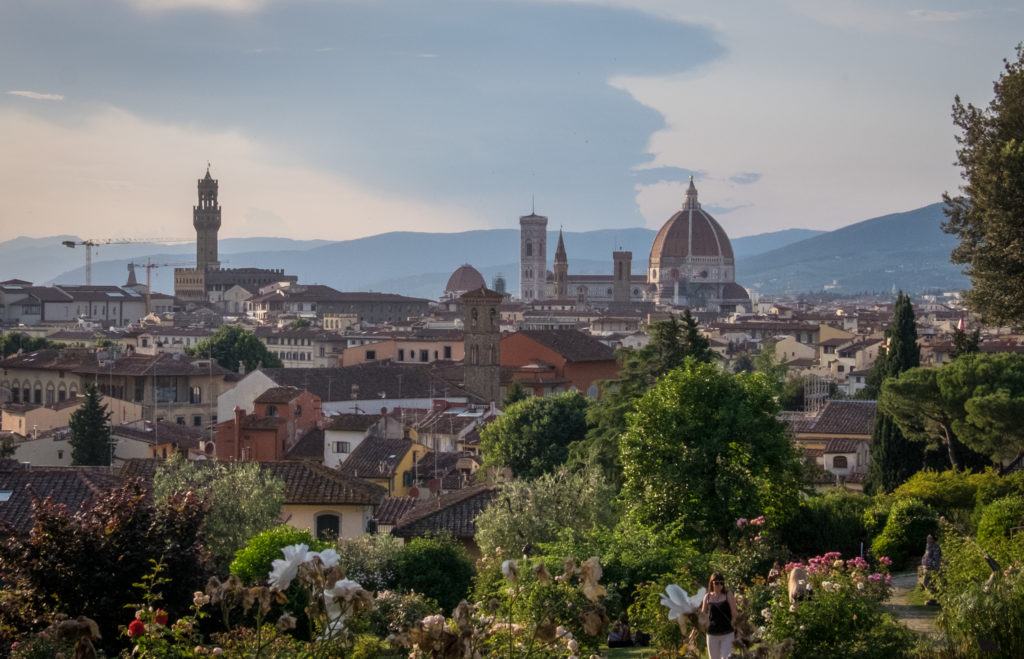
Florence
Submitted by Melanie Ferguson of Postcards & Places
The city of Florence, or Firenze in Italian, is a city steeped in art, history, and beauty. Located in the heart of Tuscany, about 145 miles (230 kilometers) northwest of Rome, it is surrounded by rolling hills and valleys. The city is divided by the Arno River, with the historic center located on the north side of the river.
What makes Florence special is its incredible wealth of art and architecture. The city has some of the world’s great museums and galleries, such as the Uffizi Gallery, which houses some of the most important works of the Renaissance, and the Accademia Gallery, where Michelangelo’s David sculpture stands.
One unforgettable experience to have in Florence is to climb to the top of the iconic Duomo, the stunning cathedral with marble panels in various shades of green and pink, bordered by white, that dominates the city skyline. Its massive brick dome is the largest ever constructed. From the top, visitors are treated to breathtaking views of the city—well worth the challenging climb up the 463 steps!
And as the capital of Tuscany, there are so many day trips from Florence that will take you all over the picture-perfect region, from their rival city of Siena to the Chianti wine region.
Where to Stay in Florence: Because Florence’s historical center is small, staying there means you’re never too far from the action. For those looking for an alternative place to stay, the bohemian Oltrarno neighborhood is a great choice. As its name indicates, it’s located on the “other” (southern) side of the Arno, and it’s a bit quieter and less touristy than the city center.
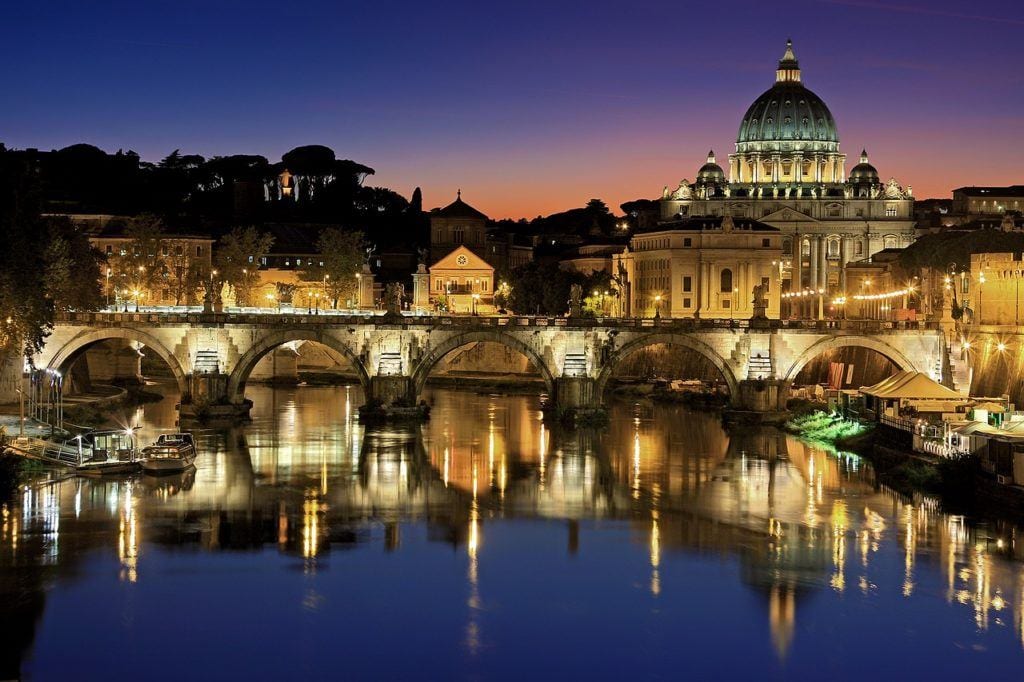
Rome
Submitted by Pam of The Directionally Challenged Traveler
Rome, the capital city of Italy, holds a special place in history and is renowned for its rich cultural heritage and contributions to art, architecture, politics, and Western civilization.
Rome has existed for over 2,500 years, giving it the nickname the “Eternal City” – and this can be found in all corners of the city. One minute you’ll be walking in a modern city and then you’ll be face to face with the iconic Colosseum. Spending three days in Rome is enough time to get a feel for the city and see most of the highlights. The Roman Forum and Palatine Hill are an impressive way to literally walk through time and experience ancient Rome.
There are also plenty of museums to captivate any traveler. The Castel Sant’Angelo is a beautiful building in itself with panoramic views of Rome, but it is a five-floor museum with secret corridors and ancient catapults. Art enthusiasts will enjoy the Borghese Gallery and the National Roman Museum which show the city throughout history.
A trip to Rome would not be complete without a food tour. A tour will give you insight into the neighborhoods of the city and the history of the dishes. Then try your hand at making traditional Roman dishes such as cacio e pepe or pasta carbonara. End the day with refreshing gelato in one of the city’s many piazzas, or the beautiful Trevi Fountain.
No matter what you do in Rome, you’ll agree that the romantic allure of the city is undeniable. The cobblestone streets, historic buildings, and mouthwatering food create an enchanting atmosphere that’s hard not to fall in love with.
Where to Stay in Rome: Every traveler is different, and I (Kate) encourage you to check out our guide to where to stay in Rome so you can find the neighborhood that is best for you!
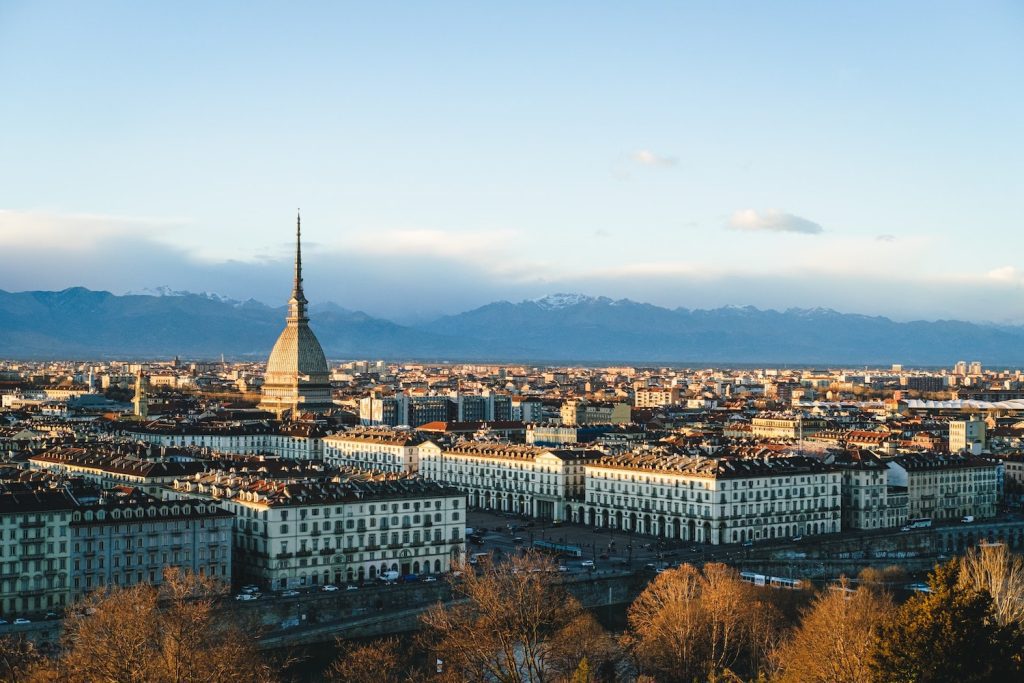
Torino
Submitted by Antoine and Marielle of Offbeat Escapades.
Torino, located in the Piemonte (Piedmont) region, is one of the best cities to visit in Italy. Its unique blend of rich history, architectural marvels, vibrant culture, and delectable cuisine make it a truly special destination. The city offers a diverse set of experiences that will leave a lasting impression.
One place you cannot miss out on is the Palazzo Reale, or Royal Palace. This opulent residence was once home to the Savoy dynasty and now serves as a museum, showcasing their lavish lifestyle and exquisite art collections. Here you can also stroll through the Royal Gardens with its intricate statues and fountains, step into the palace to admire the halls and furnishings, and tour the Royal Armoury with its arms and armor from different historical periods.
Apart from the cultural and historical landmarks, Torino is also famous for its gastronomy, and no visit would be complete without indulging in the city’s renowned chocolate, the decadent gianduiotto or gianduja, a mouthwatering combination of hazelnut and chocolate that is like the grown-up sibling to Nutella.
Where to Stay in Torino: When it comes to accommodation in Torino, our recommended neighborhood to stay in is the Quadrilatero Romano. This historic district is in the heart of the city and provides easy access to many of Torino’s main attractions, including Piazza Castello and the Royal Palace, as well as restaurants and cafes.
Within the Quadrilatero Romano, one hotel that stands out is the NH Collection Torino Piazza Carlina. This elegant hotel combines modern comfort with historic charm, as it is housed in a beautifully restored 17th-century building. The rooms are stylishly appointed and offer all the amenities needed for a comfortable stay.

Venice
Submitted by Soline of On the Road Diary
Venice is often described as the city of canals, charming bridges and narrow cobbled alleys. This romantic city is perfect for a long weekend getaway, or a must-see stop on any Italy itinerary.
The atmosphere in the streets of Venice is alluring, mysterious and romantic. The secret passageways, grand architecture and meandering canals give the city a timeless quality.
To better perceive the atmosphere of this wonderful city, you can take a gondola ride. It is an iconic activity to do in Venice. You will be surrounded by picturesque views of the ancient buildings and pass under countless bridges.
You can also visit its galleries and libraries, and enjoy some delicious Italian meals! From fresh seafood to homemade pasta, you can find the very best of Northern Italian food in Venice.
Where to Stay in Venice: During your visit, you should stay in the areas of San Marco, the heart of the city, or Giudecca, the peaceful island on the other side of the Venetian Lagoon. Couples who want be close to the action can stay at Residenza La Loggia, a family-managed traditional hotel near Piazza San Marco.
For solo travelers or backpackers, check out Generator Venice. It is a clean hostel with a great atmosphere, cheap and only a 10-minute ride by vaporetto (water bus) to San Marco.
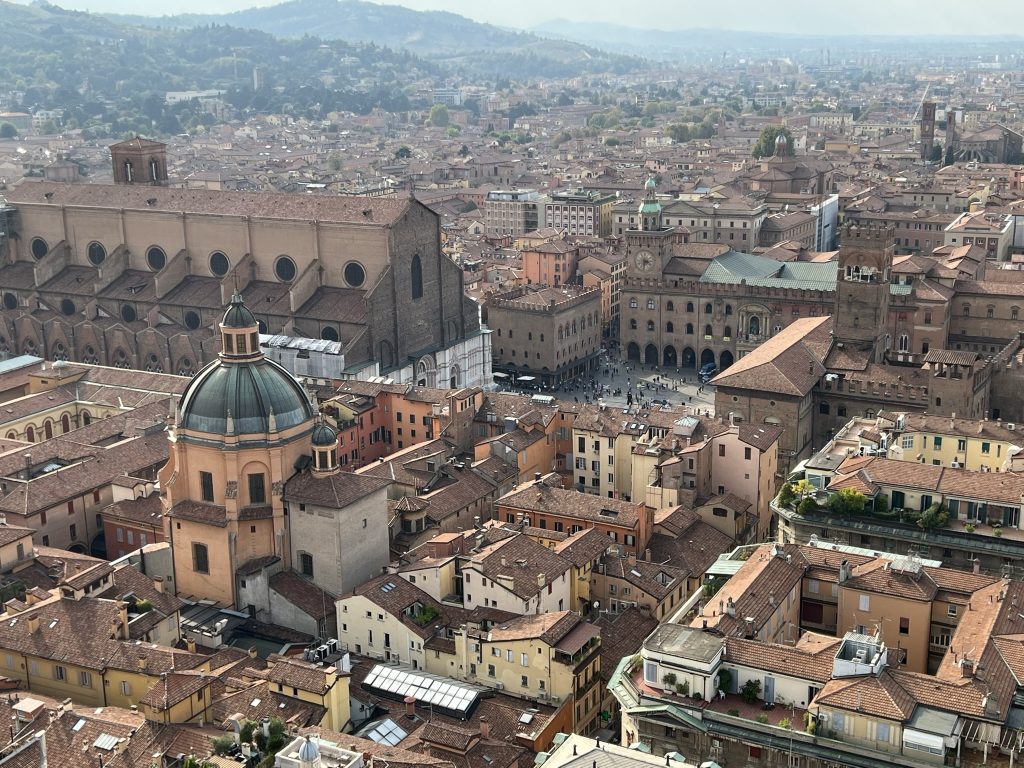
Bologna
Submitted by Sarah of In Search of Sarah
One of the best cities to visit in Italy is Bologna. Located in the heart of the Emilia-Romagna region, this foodie capital of Italy is a perfect option for those seeking to explore historic architecture, immerse themselves in rich culture, and sample some of the best food you’ll find throughout the country.
Every corner is picturesque, with its orange and red buildings and rooftops lining the streets, a vast network of unique porticos, and plethora of museums to discover. Bologna is one of those cities that may not appear to have a lot to offer, but it will instantly captivate your heart as you continually find hidden gems scattered throughout the city.
An unforgettable experience in Bologna is to visit Le Due Torri, the iconic landmark of the city, and climb the Asinelli Tower. 498 steps up a wooden staircase lead you to one of the best views of Bologna and breathtaking 360 views of the city and beyond. The Asinelli Tower is the tallest medieval tower in the world and takes 10 minutes to climb up, but the views are worth the effort.
Of course, no trip to Bologna would be complete without sampling amazing dishes that ancient city is known for. Ragù Bolognese, tortellini, balsamico di Modena, Parmigiano Reggiano, and lasagne are found on virtually every menu and should be tried at least once!
Where to Stay in Bologna: For a comfortable night’s sleep with great amenities, check into Attico di Via D’Azeglio. This quaint hotel is just a 10 minute walk from Piazza Maggiore. Plush accommodations offer views of the terracotta rooftops and mountains, and includes breakfast at a local cafe downstairs.
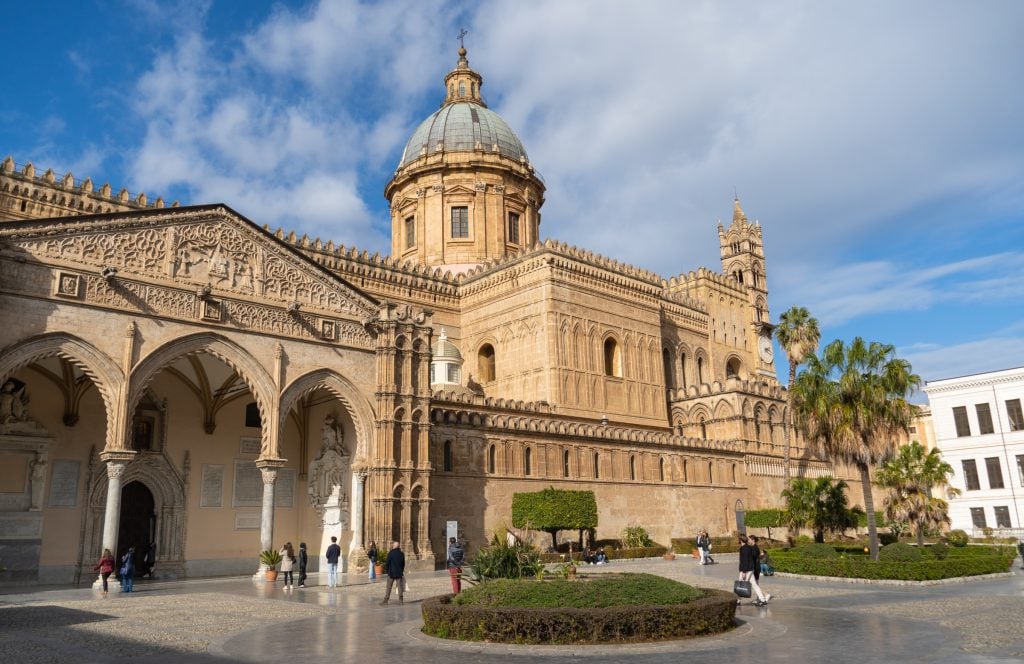
Palermo
Palermo is an Italian city unlike any you’ve ever seen. The largest city in Sicily is located in the western part of the country, and is much a cultural melting pot as anywhere you’ll find in Italy.
Palermo is most famous for its Arab-Norman architecture, a UNESCO World Heritage Site consisting of several monuments of the city. From the stunning golden Palatine Chapel to the peaceful gardens of San Giovanni degli Eremeti and unusual red-topped churches of San Cataldo and La Martorana, you can easily see how Sicily was conquered by the Arabs, the Normans, the Spaniards, and more, each civilization’s art building upon the last.
Palermo is one of the best value-for-money cities I’ve visited in Italy, has easy access to lots of cool day trips like the Segesta ruins and the beach town of San Vito lo Capo, and it has a beautiful beach community (Mondello Beach) within the city.
One of the best things to do in Palermo is explore the unusual Palermitan cuisine, which features so many Sicilian specialties but has some extra-special dishes you’ll only find in Palermo. From panelle con pane (chickpea fritters in bread) to pasta con le sarde (sardine pasta with raisins) and stigghiola (intestines wrapped around green onions), you’ll find things in Palermo that will blow your mind!
I highly recommend the Classic Sicilian Food and Wine Tour with Streaty, which takes you to several spots and has a lot more sitting and relaxing than usual food tours.
And don’t miss the desserts — the pastries in Palermo are the best in Italy! Cannoli and cassata are two of the faves, but don’t be afraid to try whatever looks good.
Where to Stay in Palermo: I recommend staying in the Politeama neighborhood, which is one of the nicest neighborhoods in the city, with lots of shops and restaurants, and is walking distance from the center. Hotel Politeama is a mid-range property with stunning views.
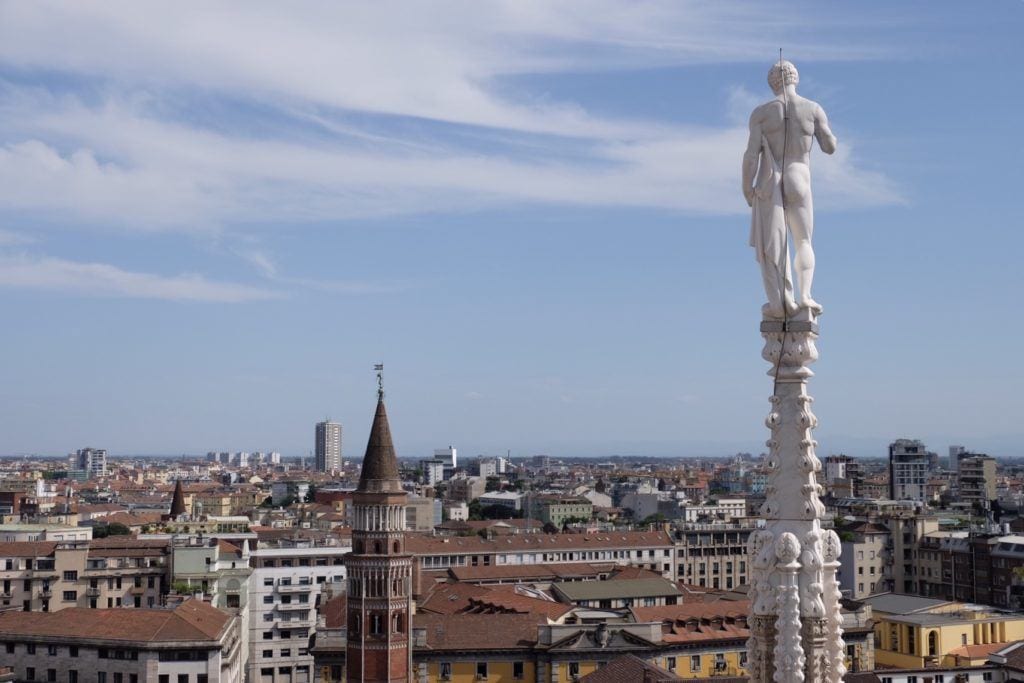
Milan
Submitted by Lowri Thomas of Many Other Roads
Milan is one of the best cities to visit in Italy for so many reasons. Boasting a unique combination of culture, fashion and stunning architecture, you will not be bored here.
From the iconic Duomo cathedral, which dominates the skyline, to the chic Montenapoleone shopping area, Milan offers something for everyone.
The best thing to do in the city is visit the renowned The Last Supper painting by Leonardo da Vinci. This iconic piece of work has been celebrated for centuries for its incredible detail and lifelike figures. Its beauty is further enhanced by its location — the refectory of the Convent of Santa Maria delle Grazie.
This impressive piece of art can only be seen on a guided tour and tickets sell out fast. To make sure you see this on your trip, you need to book well in advance.
For an epic trip, take an Italian helicopter tour for a truly special experience and see stunning Italy from above!
Also, thanks to its international airport, you will be able to reach Milan easily. Milan is well-connected by train and bus, and there are three nearby airports and many budget airlines that fly in here.
Where to Stay in Milan: For a place to stay, look no further than the Hotel Gran Duca Di York, which is centrally located and set in a stunning 18th-century palace. With its convenient location, you can easily explore all of the city’s attractions.
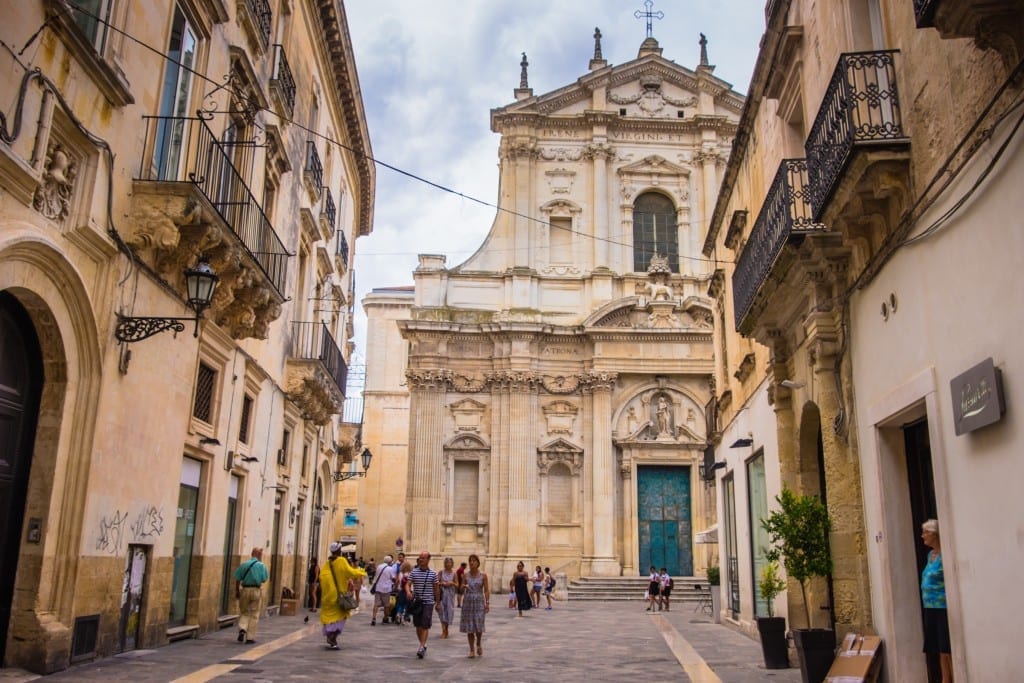
Lecce
Submitted by Robyn Dirk of Two Empty Passports
One of the best cities to visit in Italy is Lecce, located in the sun-kissed region of Puglia. Known as the Florence of the South, Lecce is a gorgeous, romantic city that should be included on any two-week itinerary in Puglia.
Lecce is renowned for its stunning Baroque architecture designed from the local golden Lecce stone. From intricate facades to grand churches to decorative buildings, these beautifully carved details can be admired from every corner of the city.
Make sure to visit Piazza del Duomo, the bustling main square surrounded by stunning architecture, including the impressive Lecce Cathedral with its soaring bell tower. And don’t miss the Basilica di Santa Croce, another Baroque masterpiece in the city.
Lecce allows you to step back in time with its ancient archeological sites sprinkled throughout the city. Take a glimpse into Lecce’s fascinating past as you wander the streets and explore the Roman Amphitheatre and Theatre.
Finally, Lecce stands tall above the rest with its delectable cuisine and tasteful wines. The best way to learn about Lecce’s history and appreciation for its cuisine is to experience it firsthand on a Guided History & Food Tasting Tour. Sample some of Lecce’s culinary delights like orecchiette pasta and pasticciotto pastries.
Where to Stay in Lecce: The best area to stay when visiting Lecce is in the romantic historic center. Treat yourself to luxury, at the Patria Palace Hotel with elegant rooms, tasteful décor, rooftop terrace, and panoramic views.
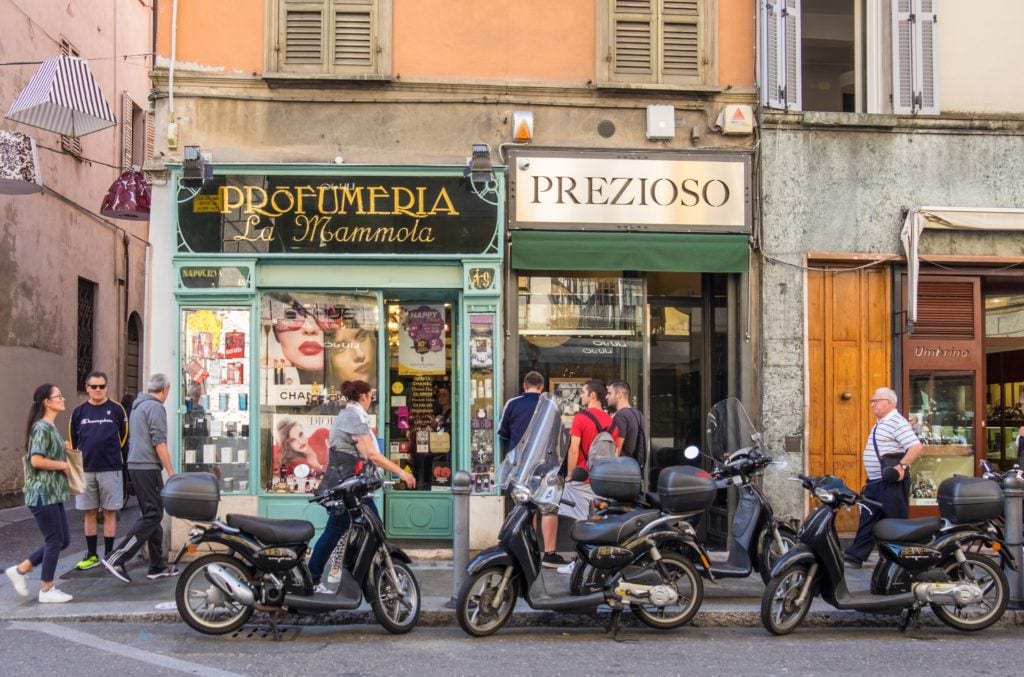
Parma
Parma is one of the most underrated cities in Italy, and one of my all-time favorites. I wish more people realized how amazing Parma is! Located in the Emilia-Romagna region, Parma boasts outrageously good cuisine, lots of art and culture, fantastic shopping, and an easy-to-get-to location between Milan and Bologna.
Parma is one of the most colorful cities in Emilia-Romagna, and the Cathedral of Parma (Duomo di Parma) is one of the most spellbinding cathedrals I’ve visited in northern Italy. Don’t miss the Baptistery either; both will blow you away.
If you’re into food, you’ll want to visit a Parmigiano Reggiano factory — there are plenty in the area! And if you’re interested in one of Italy’s best cured meats, visit Antica Corte Pallavicina in the nearby town of Polesine Parmense, where they can show you how they’ve been making culatello for generations (and even point out the hams reserved for King Charles).
But more than that, Parma is just a wonderful city to walk around and take in. Grab a tiny glass of wine from one of the bars, or sample prosciutto at one of the butcher counters. Take photos of the yellow, purple, and orange buildings. Parma has a way of casting its spell over you.
Where to Stay in Parma: Link124 Hotel is the top-rated mid-range hotel in the city, centrally located and modern with some nice design.

Verona
Submitted by Yesenia of The Sisters Who Voyage
Verona is an enchanting city tucked away in Northern Italy’s Veneto region. It is filled with rich Roman history, magical Shakespearean notes, lively piazzas, and a romantic ambiance that draws travelers worldwide to explore its ancient history and unravel its rich culture.
While fair Verona is full of glorious things to do and countless reasons to visit, one of the most popular things that draw in travelers is Verona’s deeply intertwined past with Shakespeare’s tragic tale, Romeo and Juliet. In fact, Verona is home to the legendary fictitious Juliet’s House — an iconic must-visit attraction for hopeless romantics and literature fans.
After you have finished visiting Juliet’s balcony, you’ll see colorfully decorated walls filled with love notes, band-aids, and locks that adorn the gates. If you need love advice, you can leave a message for Juliet in the red mailbox or leave a sticky note on the designated walls if there’s room.
All in all, Verona is a beautiful city to visit, and it offers an unforgettable experience that will leave you with fond memories and a newfound appreciation for the classical arts and Roman history.
Where to Stay in Verona: If you’re wondering where to stay in Verona, you’ll want to stay in the Verona city center, a hidden gem of stunning and lively squares and winding cobblestone streets. A lovely place to stay would be Hotel Giulietta e Romeo. Its central location lets you easily explore some of Verona’s main tourist attractions, like the Arena di Verona and Piazza delle Erbe.
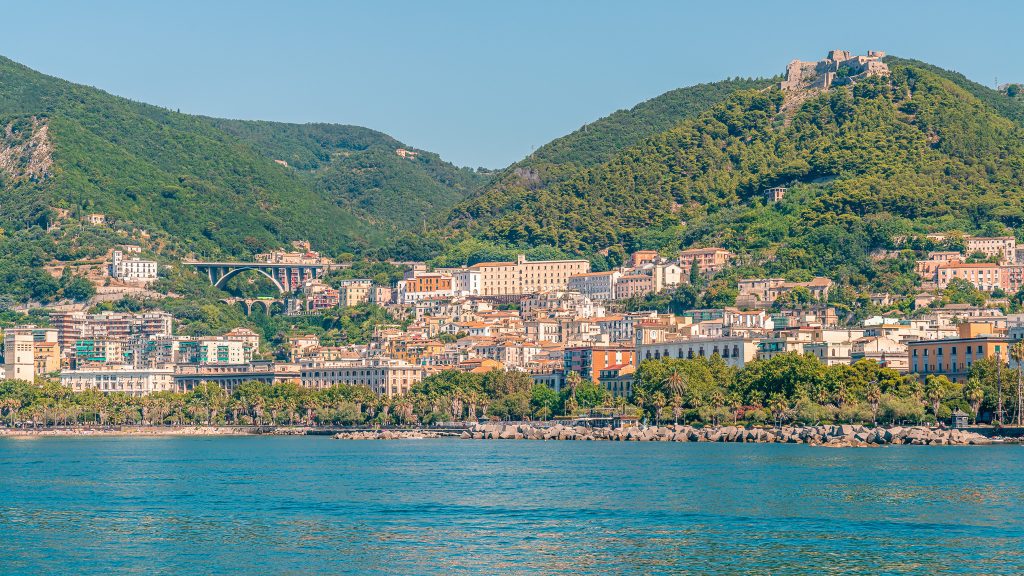
Salerno
Submitted by Jo from World Wild Schooling
Often overlooked for the more popular Amalfi coast towns, Salerno offers what those touristy places miss: the feeling of an authentic city. It’s got a bit of everything — history, culture, and a fabulous location on the Tyrrhenian Sea, less than an hour from Naples, on the opposite side of the Sorrentine Peninsula.
One thing you can’t miss is the Salerno Cathedral. Dedicated to St. Matthew, it’s a classic example of Norman and Arab architecture. And right there in the historic center is the Minerva Garden, a botanic garden from medieval times with panoramic views from the cafe. Villa Comunale di Salerno is a municipal garden very close to Minerva Garden. They both make for a nice break from sightseeing.
You should also take a walk along the Trieste Lungomare, Salerno’s seafront promenade complete with palms, a great place to take in the sea air. And don’t miss the Salerno Harbour, bustling with activity and offering some fantastic views from the little cafe at the end of the harbor.
One of the best ways to explore Salerno is by taking a guided walking tour. This way, you get to really experience the city, see all the hidden gems, and learn about its rich history.
Where to Stay in Salerno: When it comes to staying in Salerno, the Historic Center is a great choice. Here, you can be right in the middle of it all. Casa Santangelo Suites used to be the summer residence of the Marquess of Naples that’s been converted into a hotel. It’s right there in the heart of the Old Town, making it easy to explore Salerno and its attractions. Plus, it’s just 200 meters from the beach, making it a great place to relax and enjoy your vacation.
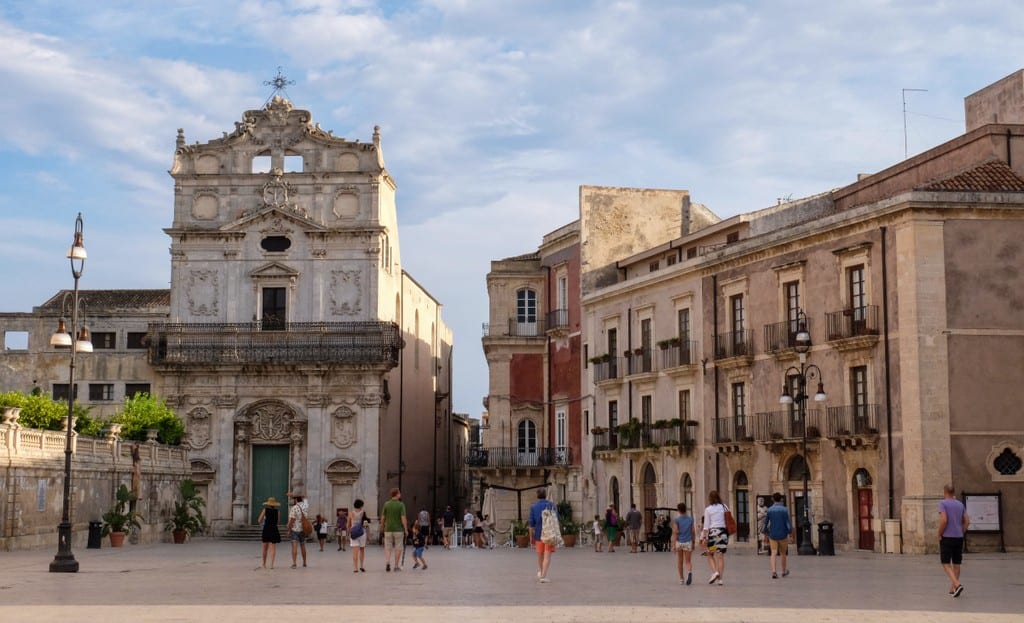
Siracusa
Submitted by Kelsea of Out of Office Mindset
Siracusa, Italy, is an ancient city with a fascinating history and vibrant culture. On the eastern coast of Sicily lies a city that was once considered among the most significant in the world. It served as a prominent hub for Greeks and its ruins today offer a fascinating insight into its lively history.
When visiting Siracusa (also known as Syracuse), the Neapolis Archaeological Park is a must-see. Here, you will be able to view many well-preserved Greek structures. The most impressive is the Greek Theater where many of the infamous Greek tragedies made their debuts.
Additionally, Isola di Ortigia is a must-visit! This island is home to the historic center of Siracusa and is the most beautiful place to visit in the city. On the island, there is a market with fantastic, fresh food and bountiful vendors. The sandwiches from market vendor, Caseificio Borderi, have been known to change lives!
Walking around the island, you will see Apollo’s temple, the fountain of Diana, the stunning Siracus Cathedral, and the impressive Castello Maniace Ortigia. Street performers are also common, making for a wonderfully entertaining adventure.
Where to Stay in Siracusa: Isola di Ortigia is a great section of Siracuse with a lot to do which makes it a great place to stay! Do be aware, however, that driving on the island has restrictions so be sure to follow the ZTL rules in place while you are there (learn more about that in Kate’s guide to driving in Italy).
Algilà Ortigia Charme Hotel is an exceptional accommodation choice. Its antique furniture exudes a charming ambiance, which blends seamlessly with modern features such as air conditioning and internet connectivity.
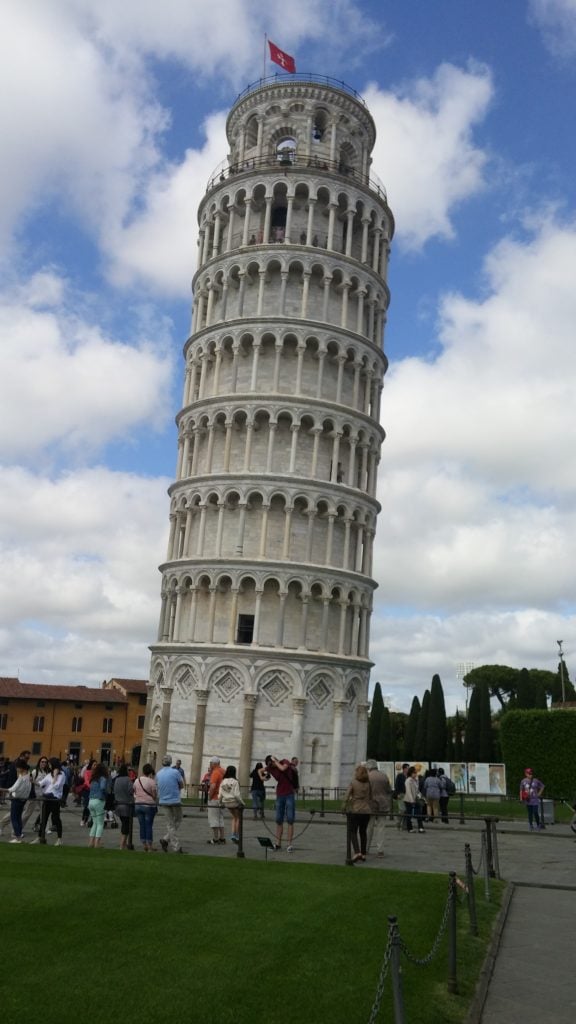
Pisa
Submitted by Travel Addicted Unicorn
Pisa is a charming city located in the Tuscany region of Italy, renowned for its iconic leaning tower, which has become an emblem of the city. The Leaning Tower of Pisa is poised at an angle of 5.5 degrees and has become one of Italy’s most popular tourist attractions, located in the UNESCO World Heritage Site of Piazza dei Miracoli (Square of Miracles).
Visitors can climb 296 steps to the top of the tower, which offers breathtaking views of Pisa and the surrounding countryside and mountains. Its construction began in August 1173, and he tower began to lean soon after its construction due to the soft ground beneath it. The lean continued to increase over the years until engineers stabilized the tower in the 1990s.
The Piazza dei Miracoli is also home to several other buildings, including the Cathedral of Santa Maria Assunta, the Baptistry of St. John, and the Camposanto Monumentale, which is a monumental cemetery.
Apart from the leaning tower and the buildings beside it, Pisa has several other notable landmarks. The Piazza dei Cavalieri (Knight’s Square) is a beautiful square that is home to the Palazzo della Carovana, which houses the prestigious Scuola Normale Superiore di Pisa. Another attraction to check out is Giardino Scotto, a large park situated on the right bank of the Arno River, near the city center.
Also, Pisa is home to several museums, including the Museo dell’Opera del Duomo, which is located near the leaning tower. The museum houses an impressive collection of medieval and Renaissance art and sculptures. The Museo Nazionale di San Matteo is another must-visit museum that features a vast array of Tuscan and Italian artworks.
In addition, Pisa is a great place to enjoy delicious Tuscan cuisine. The city has a vibrant food scene, with plenty of restaurants, cafes, and street food vendors serving up traditional Tuscan dishes, with more seafood than you might expect further inland. The easiest way to get to Pisa is via a train from Rome, which takes about three hours with the high-speed train.
Where to Stay in Pisa: For accommodation, check out Grand Hotel Duomo which is a lovely hotel located a two-minute walk from the Leaning Tower.
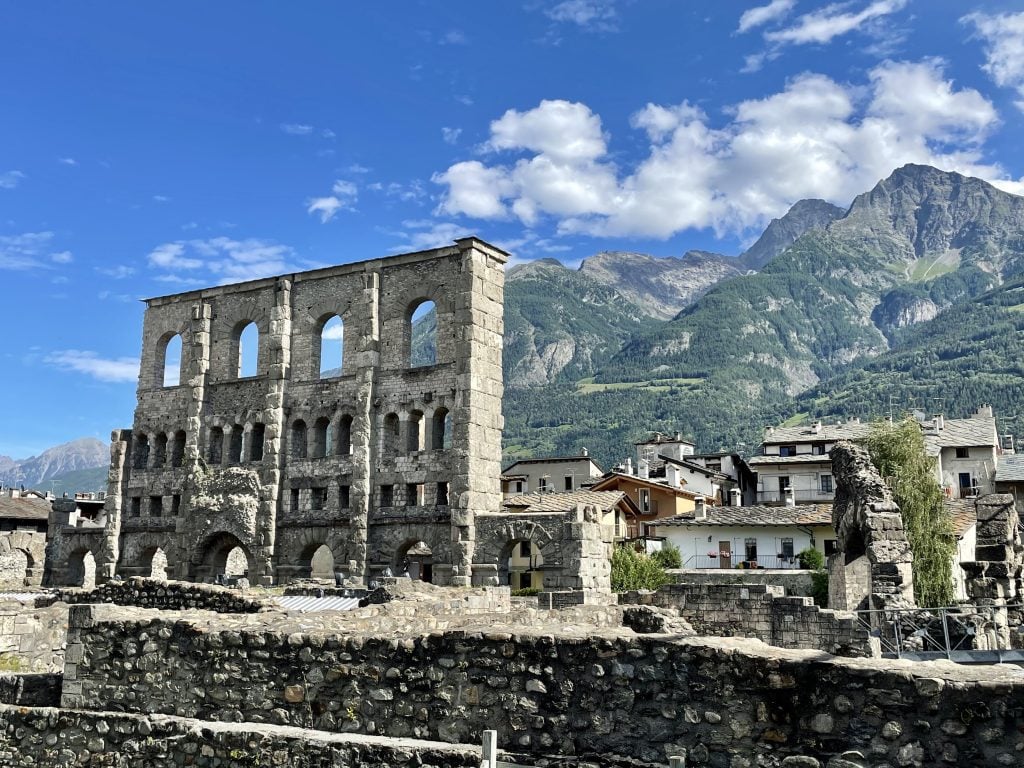
Aosta
Have you heard of the city of Aosta, Italy? Aosta is the capital of the region of Valle d’Aosta (Aosta Valley), tucked away into the far northwest of Italy, surrounded by France, Switzerland, and Piemonte. Here you’ll be spoiled for views with jagged mountains in every direction!
Aosta is a small, French-flavored Italian city that many visitors use as a base for hiking and outdoor exploration. Plenty of people come to hike Gran Paradiso in the summer and ski Courmayeur in the winter. But don’t overlook the city of Aosta itself!
Aosta is home to some of the best preserved Roman ruins in the far north of Italy. The Valle d’Aosta Culture Pass gives you access to several of these sites in one ticket: the Roman amphitheater, Archeological Museum, Basilica di San Lorenzo, and the Forensic Cryptoporticus.
If you’re a wine fan, you’ll appreciate a visit to Grosjean Vineyards, where enthusiastic locals give you taste of the local blends with some Aostan snacks. You can take a bus here, but if you’re in the mood for a bit of exercise, it makes a nice hourlong journey from downtown Aosta on foot.
And don’t miss Aostan aperitivo! The city comes to life just before sunset, with locals sitting down for spritzes and snacks before dinnertime. The chestnuts wrapped in lardo are a delicious and unique Aostan specialty. (Just be warned, vegetarians and vegans — sometimes it seems like every dish in Valle d’Aosta is full of ham or cheese.)
Where to Stay in Aosta: Aosta has a small, fairly compact city center; staying in this area will give you easy access to all the city has to offer. Vecchio Mulino Guest House is a highly rated hotel located close to the river in a peaceful location, and has a cozy mountain interior with lots of wood and fireplaces!
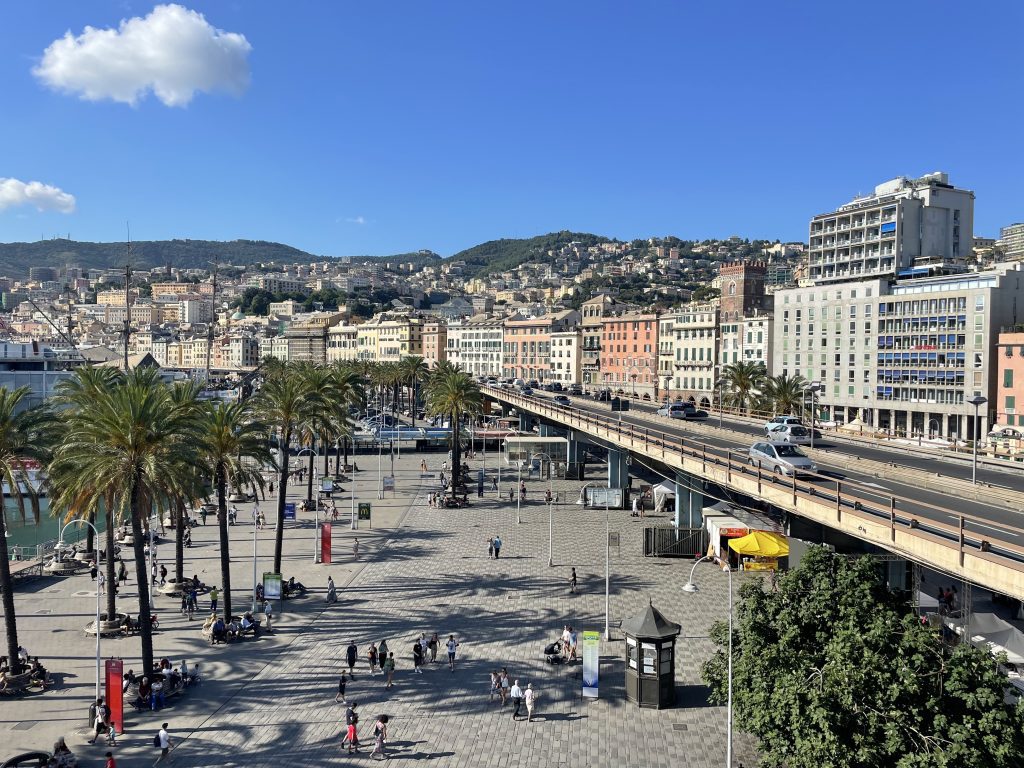
Genoa
Submitted by Sarah of LifePart2 and Beyond
Many visitors tend to skip over Genoa and head straight to the more popular resorts of Cinque Terre and Portofino. However, the stunning city of Genoa is absolutely worth a visit. It offers a more authentic experience with fewer tourists than other major Italian cities.
As Genoa’s old city is the largest in Europe, I suggest taking a walking tour of the historic centre or just enjoy getting hopelessly lost in the charming maze-like streets.
Make sure to visit the cathedral and admire the contrasts of its medieval and Renaissance interior. Additionally, don’t miss the modest home of Christopher Columbus and the magnificent Palazzi de Rolli on Via Garibaldi, which once belonged to the city’s nobility.
Take the art deco elevator up to Spianata Castelletto for panoramic views of the city and the harbour.
Don’t forget to pay a visit to the old harbour as well and visit the world-class aquarium, and be sure to take a trip on the Bigo Panoramic Lift for a bird’s-eye view of the harbour.
If you have an extra day to spare, head to the nearby colourful fishing village of Boccadasse or take a train to Nervi, a charming suburb of Genoa. Here, you can enjoy a lovely walk along the stunning two-kilometre Anita Garibaldi Promenade, which offers breathtaking coastal views.
And, of course, you absolutely must try the local Genovese cuisine, renowned worldwide for its incredible pesto.
Where to Stay in Genoa: With so much to see and do, finding a great place to stay is essential. My personal recommendation is the beautiful historic Grand Hotel Savoia. It’s located right in the heart of the old town, close to the harbour and the central train station. Everything is conveniently within walking distance, and the hotel is perfect. Who wouldn’t want to stay in a former palace?
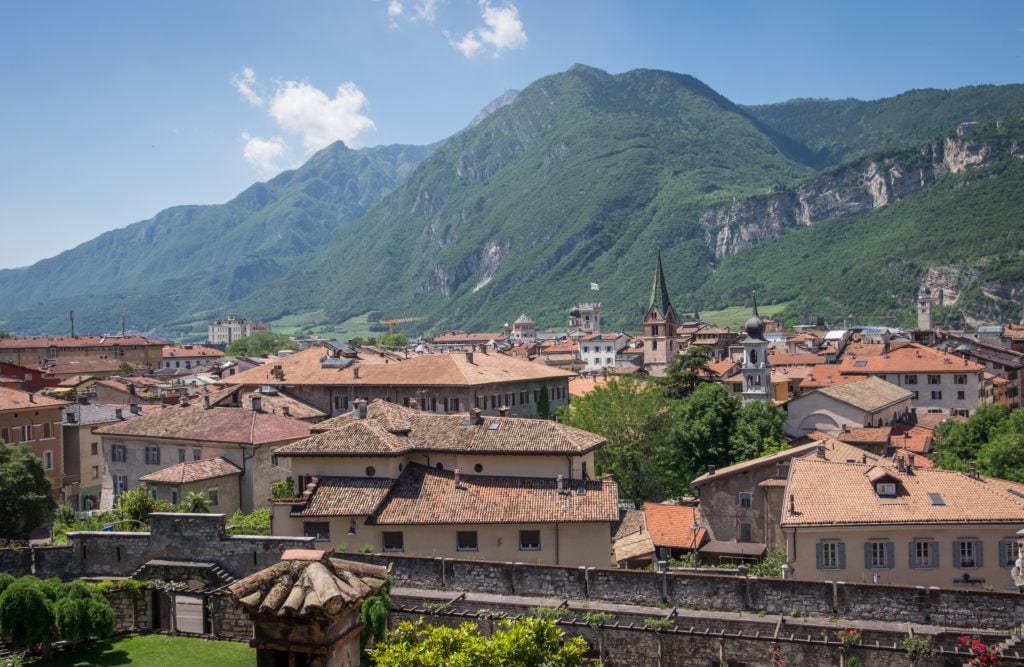
Trento
Submitted by Paul D’Souza of Paulmarina
Trento is a historical city located at the heart of the Italian Alps. Known for colored buildings and intricately painted mural walls, it has long been a city of great importance throughout the ages.
The roman god of water, Neptune, watches over Trento with his trident at the tip of the fountain in the main square. Here you will also find some of the most important buildings, the cathedral of San Vigilio, the Pretorio Palace with the well-preserved Civica tower and the most eye-catching Casa Cazuffi, with its detailed age-old frescoes.
Continue down the cobbled Via Rodolfo Belenzani street to the picture-perfect Quetta Alberti-Colico palace, the Thun palace and the legendary Fugger Galasso devil’s palace. The highlight of the city, however, is the grand Buonconsiglio Castle overlooking the charming old town.
The princely bishops of Trento hosted nobles, greater rulers and bishops through the ages in the Venetian-style castello. A visit to the enchanting gardens and the timeless castle chambers are well worth it, coupled with a look in at the “cycle of the months” frescoes in the observation tower. More things to do in Trento include hiking, biking, and taking the cable car up the mountain (which has been Kate’s cover photo for this site for the last few years).
Where to Stay in Trento: At last, most hotels are conveniently situated at the heart of the old town, such as the Grand Hotel Trento. But if you are searching for an experience with green mountain views, book a stay in the stunning Hotel Villa Madruzzo, a former 19th century villa.

Viterbo
Submitted by Claudia Tavani of My Adventures Across The World
Viterbo is one of the lesser known cities in Italy, at least internationally. Italians have been captivated by its unique beauty for a long time already! This medium size city in the region of Lazio is located about 100 kilometers from Rome, and sits on the hills of the Tuscia region, which comprises northern Lazio, Southern Tuscany and bits of Umbria.
Being less frequented by international tourists, Viterbo has retained its local character and charm, and that is reason enough to visit. Here you won’t have to elbow your way around for the perfect photo!
The main attraction in Viterbo is the Palazzo dei Papi — the Papal Palace. Indeed, Viterbo was a papal town for 24 years in the 14th century. This is where the first Conclave in history was actually held. In the same square, you can also visit the beautiful Duomo of San Lorenzo.
Take your time to wander around San Pellegrino, Viterbo’s main historic quarter. It’s a maze of narrow, cobbled alleys with buildings in piperino stone. To relax, plan a visit to the Terme dei Papi, which are incredibly budget-friendly historical thermal baths.
If you happen to be in the region at the beginning of September, plan to attend the celebrations for the local saint patron, Santa Rosa, on the night of September 3. A 30+ meters papier mache statue is beautifully illuminated and carried along the narrow streets of the city center by a team of 100 porters, while the city lights are turned off. It’s an impressive sight!
Where to Stay in Viterbo: The best place to stay in Viterbo is Il Gallo Nero, a small locally run guest house in the heart of the San Pellegrino District.
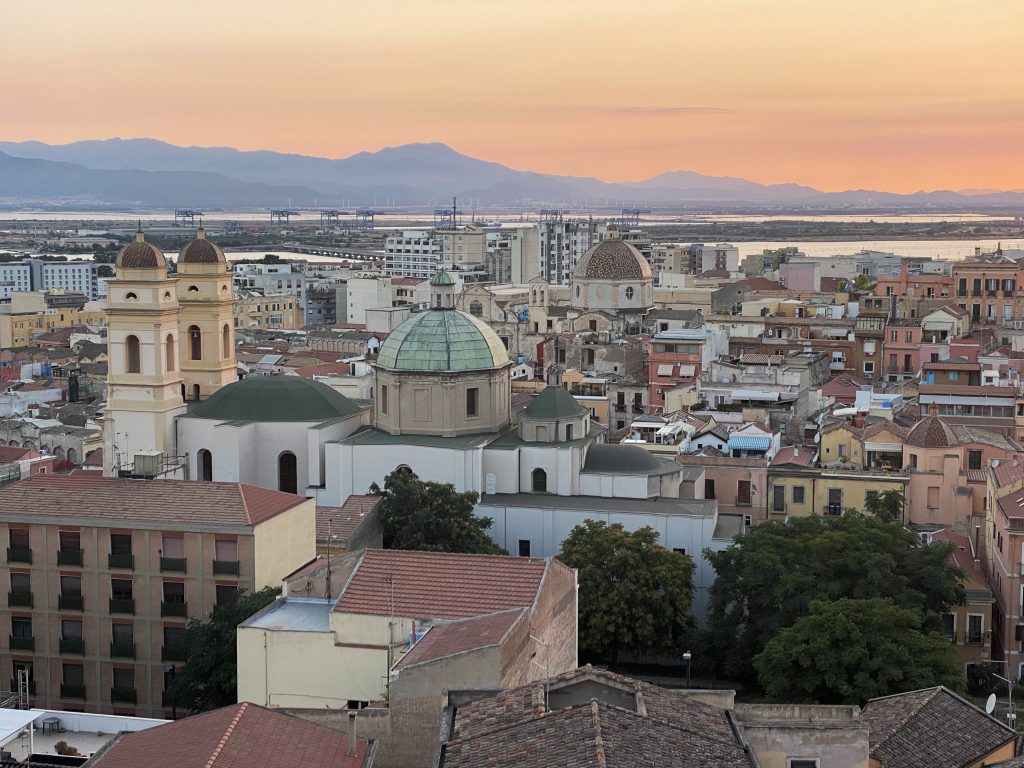
Cagliari
Submitted by Claudia Tavani of Strictly Sardinia
Cagliari, the capital of Sardinia, is one of the most beautiful cities in Italy. While it’s become more known among international tourists too, the city still retains its local character and unique soul. Founded in the Neolithic era, Cagliari was conquered by the Phoenicians, the Punics, and later on the Romans, all of whom left their mark.
Beautifully set on the hills overlooking the Mediterranean sea, Cagliari is a perfect mix of incredible historical sights, beautiful churches, and nature at its best. To fully appreciate the history of Cagliari, join a guided tour of the historic districts — Castello, Stampace, Villanova and La Marina. Castello is where you’ll be able to see the beautiful Cathedral, go up the many watchtowers, and take in the magnificent sunset views from the terrace of Bastione Santa Croce.
Other places you should not miss are the Roman amphitheater, Tuvixeddu Necropolis, the well-curated Archeology Museum, the monumental cemetery and church of Bonaria, and the beautiful botanical gardens, one of the oldest in Europe.
If you fancy nature, you don’t have to get far! A quick bus ride from the center will take you to Calamosca beach, from where the hike to the Sella del Diavolo promontory starts. In less than one hour you’ll be at the peak and able to appreciate views of Poetto Beach below, and of the Molentargius Lagoon, where pink flamingos live and nest.
Where to stay in Cagliari: The best area to stay in Cagliari for first time visitors is Stampace, which is where most good restaurants and bars are located. La Dolce Cagliari is a nice local guest house with clean, modern and comfortable rooms.
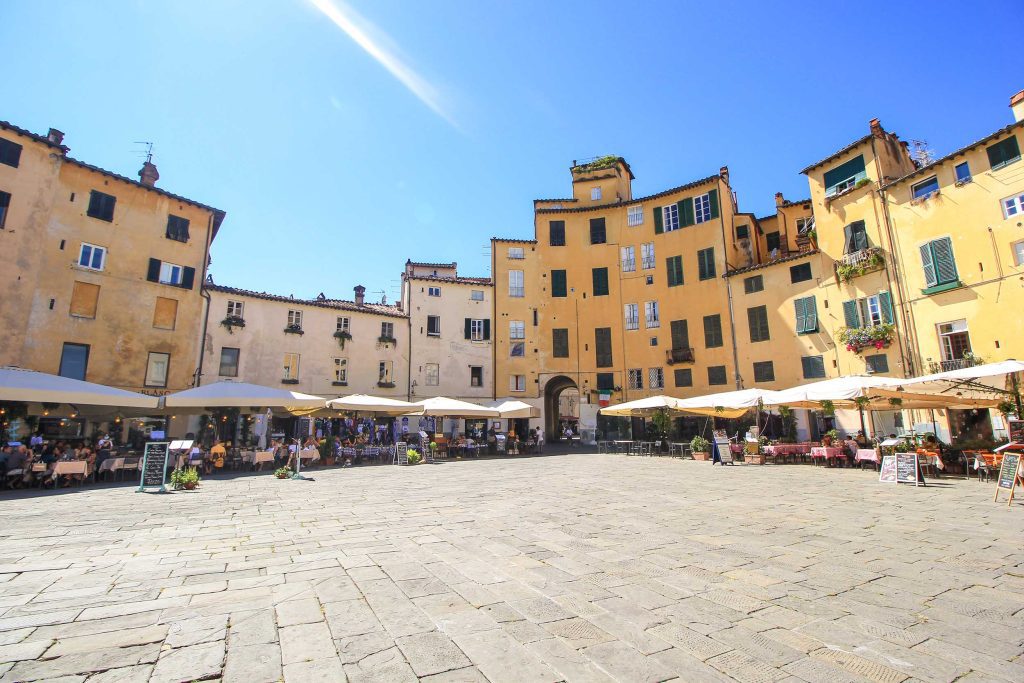
Lucca
Submitted by Martina from PlacesofJuma
The city of Lucca is probably one of the most beautiful cities in Italy. It is located in Tuscany, about 90 kilometers from Florence and close to Pisa. Lucca is most famous for its medieval old town, but also for the many historic villas that are located just outside of the city. The center of the city is full of picturesque alleys and charming squares. Climbing one of the dizzying towers or taking a bike ride along the walls is an experience not to be missed.
The main attractions of Lucca are the well-preserved walls that surround the entire historic center and are one of the best preserved in Europe. Secondly, you’ll want to visit the Guinigi Tower, with its impressive oak on top. Also worth a visit are the city’s many churches and beautiful squares. For those who love nature, the Botanical Gardens of Lucca are a must. The gardens are beautiful and there is a pond full of turtles that live there.
Lucca’s cuisine is also unbeatable. A visit to the Osteria Nova is a must, it is one of the best places for innovative Tuscan cuisine and good drinks.
Where to Stay in Lucca: If you’re looking for somewhere nice to stay, consider staying in the historic center of Lucca, which has some really nice hotels. We recommend the San Luca Palace, a small hotel right in the old town.
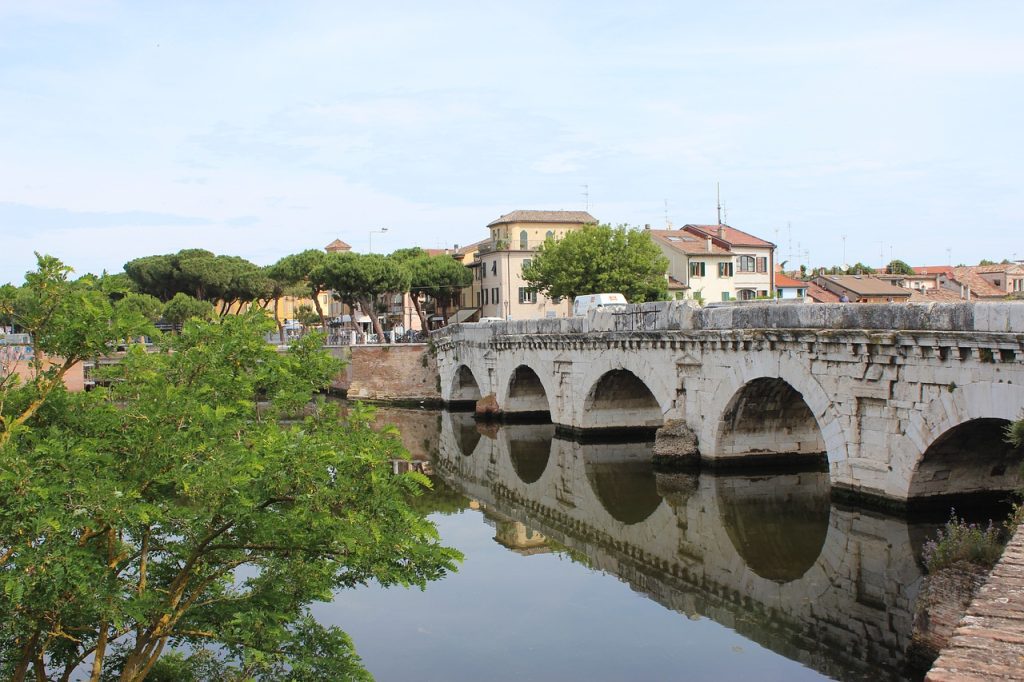
Rimini
Submitted by Noel Morata of Visit California and Beyond
The city of Rimini, Italy is located in the Emilia-Romagna region and sits on the Adriatic Sea. This is a very popular beach destination for Italians tourists and Rimini boasts long sandy beaches, a lively nightlife scene, fantastic seafood venues and attractions that even non-Italians will find worth visiting.
Rimini has a rich culture and history with historic sites that includes the Tiberius Bridge, the Arch of Augustus and the Surgeon’s House. These are all easy to visit and explore on foot around the historic parts of the city.
The city is also famous for its cuisine with seafood that is caught in the local coastline areas serving a variety of fish, shellfish and delicious stews and grilled delicacies. Try Cannochia squid, red mullet Capone, or a delicious sea bass in red wine vinegar. (Note from Kate: the crudo here is unbeatable, too!)
There are a variety of events and festivals that are held throughout the year to include an International Film Festival, the Rimini Meeting, and Pink Night, a fun night-long celebration of art and music at entertainment venues around the city.
One of the best things to do in Rimini is to take early morning walks along the harbor area. At this time fishermen are getting their nets and equipment ready and setting out to the ocean when the sun is rising. It’s a beautiful time for photography, as well as peace and quiet.
Where to Stay in Rimini: The best places to stay at Rimini would be somewhere ocean-front, and one of my favorites is Hotel Villa Adriatica, a classical styled hotel with magnificent views, outdoor pool and gardens along with attentive service and delicious restaurants.
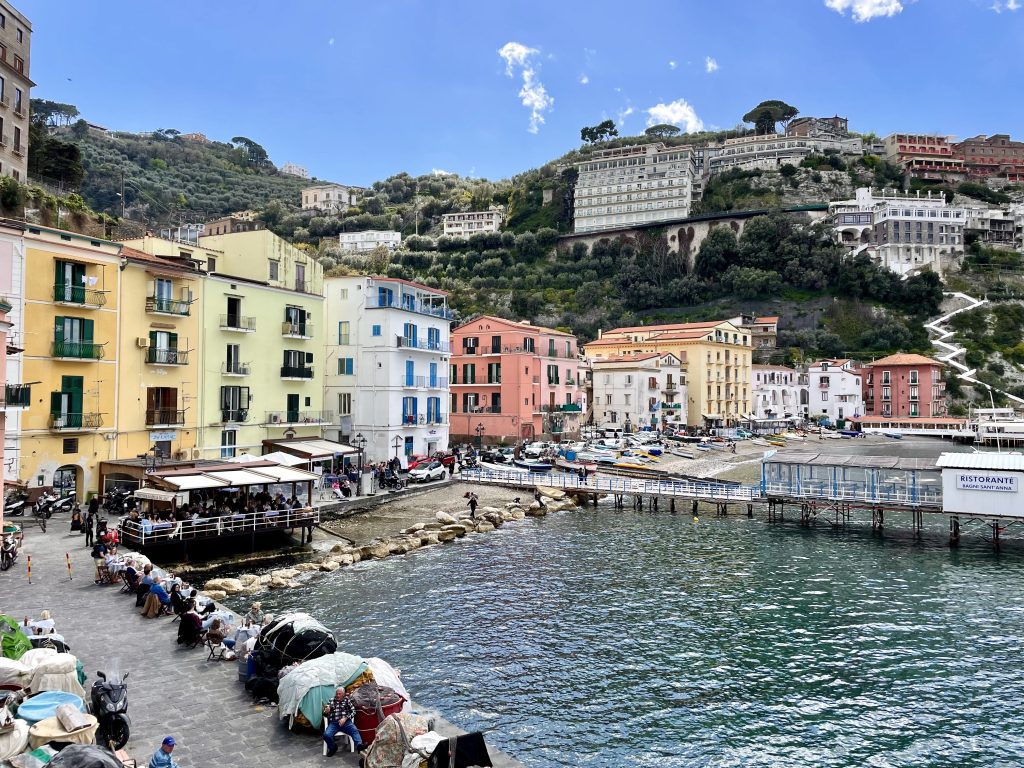
Sorrento
Sorrento is one of the most popular southern cities in Italy to visit, and for good reason — this town has the world at its feet! Located at the tip of the Sorrentine Peninsula in the region of Campania, just a 40-minute train ride from Naples, many travelers end up using Sorrento as a base for exploring the region.
Sorrento is a small, pastel-colored town with lots of interesting laneways to get lost in. While not one of the nicer beach destinations in the region, it has a beautiful coastline with pastel buildings set back against the sea. And it seems like lemons are bursting out of every direction!
But more than anything, Sorrento excels at day trips. Sorrento is incredibly close to the island of Capri and the Amalfi Coast. It’s also reasonably close to Pompeii, Herculaneum, and Paestum; to the islands of Ischia and Procida; and to the city of Naples, of course.
But crucially, staying in Sorrento is much cheaper than the islands of the Amalfi Coast, making it a wise place to stay for the duration of your visit.
One of the best things to do in Sorrento is to hike the Path of the Gods along the Amalfi Coast. Start by taking a ferry to the town of Amalfi in the morning, then a bus to the town of Bomerano. From there you can hike along the spectacular coastline, with heavenly views, finishing in Positano, where you can hop on another bus back to Sorrento. Perfect day trip!
Where to Stay in Sorrento: Hotel Sorrento City is super-central with clean and bright rooms, and a fabulous shaded rooftop terrace.
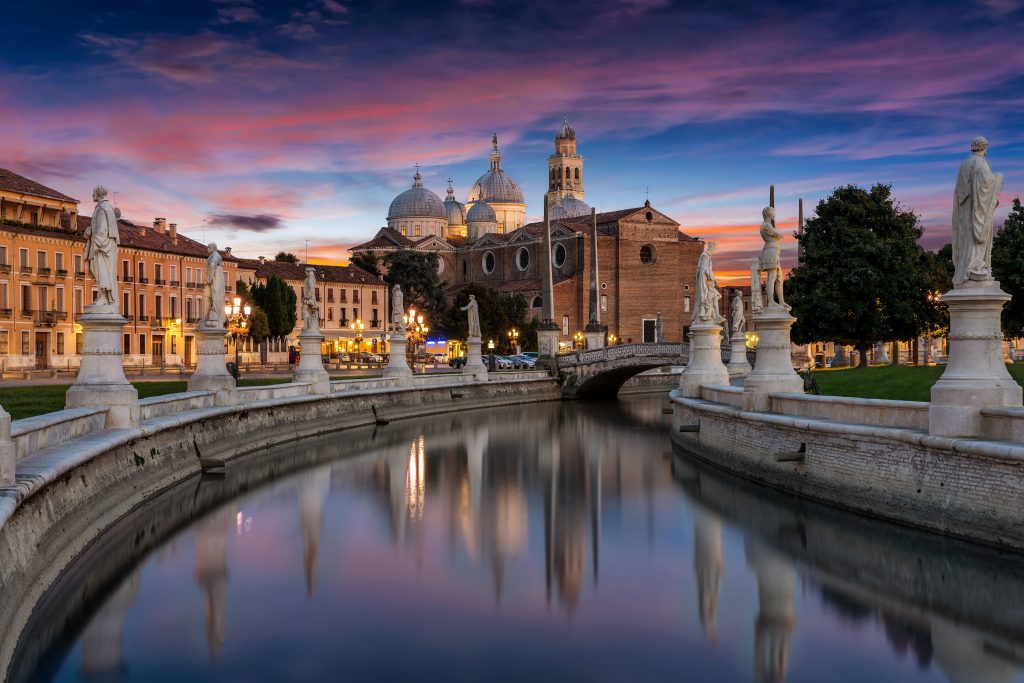
Padova
Submitted by Dhara of It’s Not About The Miles
With its ancient university, rich history, and many notable landmarks, Padova (also known as Padua) is a must-visit city in Northern Italy. Padova is located in the Veneto region and makes an easy excursion from Verona or Venice.
Padova is home to two UNESCO World Heritage sites, and art enthusiasts will definitely want to put the Scrovegni Chapel at the top of their Padova itinerary. The chapel contains a stunning fresco cycle by Giotto. In fact, all the interior surfaces of the chapel are covered in frescoes, with beautiful colors and vivid detail. One entire wall hosts the Last Judgment.
It’s worthwhile considering a guided tour of the Scrovegni Chapel for the most immersive experience. Be sure to pick a walking tour of Padova’s historic center that includes the chapel!
Other than the Scrovegni Chapel, you will want to visit the Orto Botanico di Padova, also a UNESCO World Heritage site, the famous Basilica d’Sant Antonio (a place of pilgrimage), and the Prato dell Valle, one of the largest squares in Italy.
A guided tour of Palazzo Bo, the medical school at the University of Padua, is also very worthwhile if you enjoy history and architecture.
Where to Stay in Padova: The NH Padova is a four-star hotel located within walking distance of most sights in the historic center.
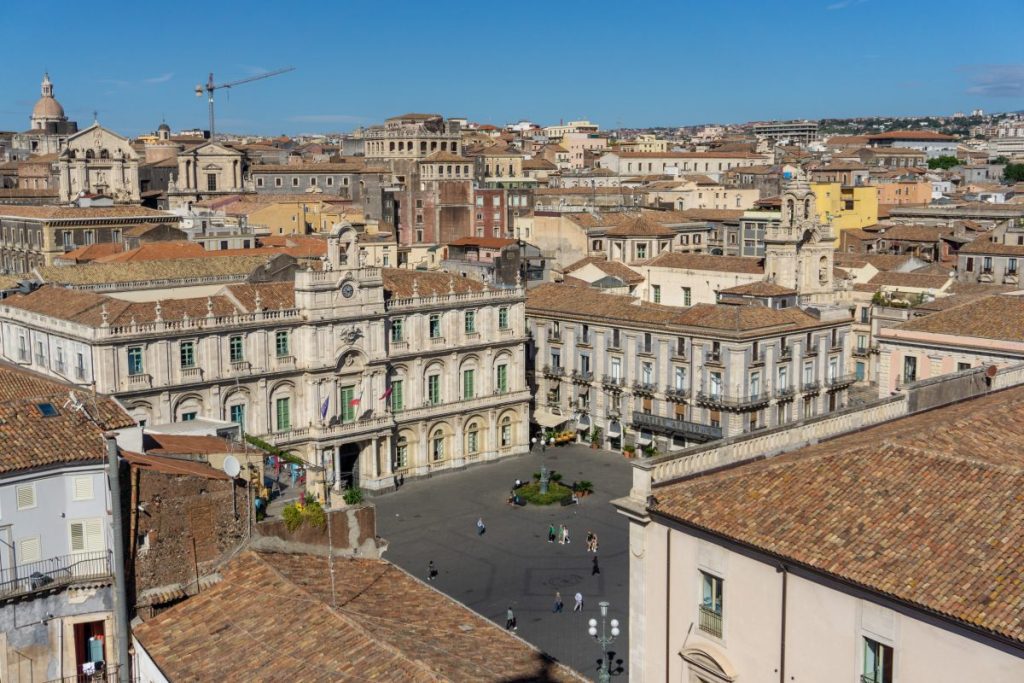
Catania
Submitted by Maggie of The World Was Here First
Sicily’s second city of Catania has a bit of a rough-around-the-edges reputation and doesn’t attract quite as much attention as vibrant Palermo, however, it is just as worth visiting as the Sicilian capital. Catania is an excellent addition to any trip to Sicily and it is an unmissable Italian metropolis.
Located on the eastern coast of Sicily, the city is home to the island’s busiest airport and makes for a great base for day trips to places like Siracusa, Taormina and even Mount Etna. However, Catania itself has a lot to offer visitors and it’s worth taking the time to explore the city.
No visit to Catania is complete without heading to the notorious Catania Fish Market. Located in the center of the city, you can take in the electric energy of this place while seeing all of the fresh fish that come out of local waters. There are also some great places at the market to sample some traditional Sicilian seafood.
There are plenty of great, non-seafood dishes that hail from Catania, as well. For instance, no visit to this city is complete without tucking into a plate of pasta alla norma — a pasta dish made with tomatoes, eggplant and ricotta salata.
And if you want to experience excellent views over the city, make sure to climb the bell tower at the Chiesa Badia di Sant’Agata. Here you can get panoramic views of Catania and of Mt Etna in the distance.
Where to Stay in Catania: If you’re looking for a great place to stay in the city, then Hotel Centrum in the centre of the city is a good option.
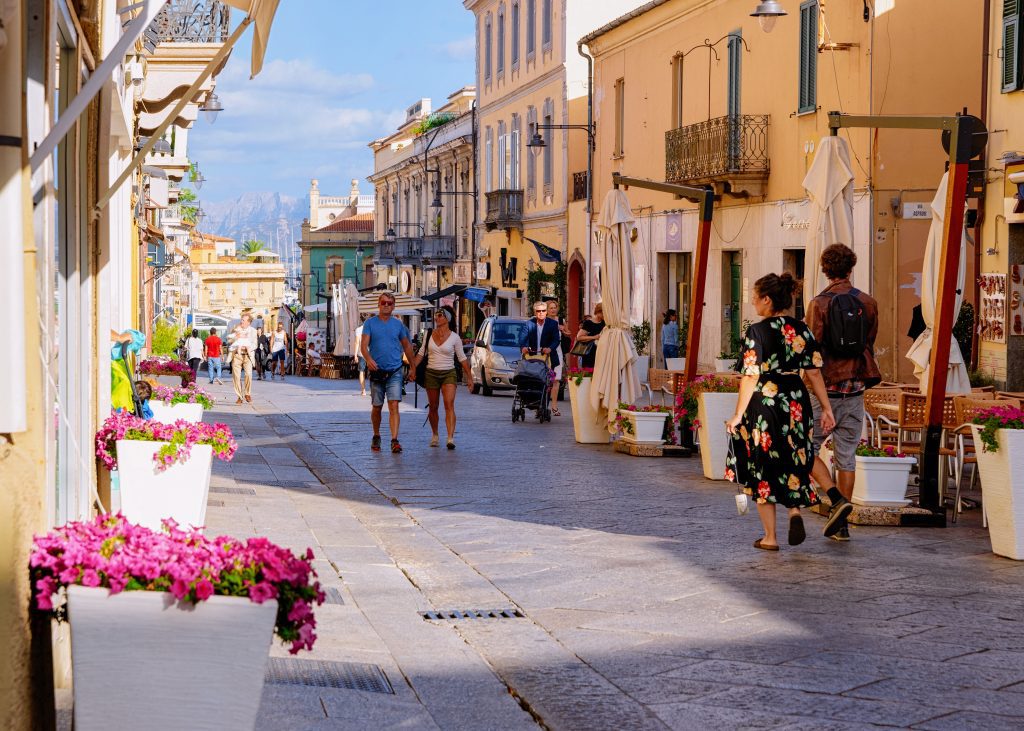
Olbia
Submitted by Kristin of Tiny Footsteps Travel
Olbia is a medieval city on the coast of northern Sardinia, Italy’s second largest island. Being the gateway to the touristy Costa Smeralda (popular for honeymooners and romantic getaways), Olbia is surrounded by stunning white sand beaches, and a beautiful mountainous range. Olbia is a unique city that allows you to experience history first-hand while exploring ancient and medieval architecture, but you’re also not far away from breathtaking natural beauty.
Olbia has a fascinating history, having been inhabited since the prehistoric times, and it got its name from an ancient Greek word meaning “happy.” It is home to cobbled streets, narrow colourful alleyways, as well as some fascinating archeological sites. For a unique and special way to see the impressive architecture that Olbia has to offer, consider taking a 1-hour tuk tuk archeological tour of the city.
Olbia’s airport is only 2.5 miles (4 km) from the city center, making it a convenient place to travel to. As well as flying into Olbia, there are many ways to get to Olbia, including taking a ferry from Genoa (as Kate and her husband did on their Sardinia trip, driving all the way from Prague!).
Where to Stay in Olbia: Stay at L’Essenza Hotel in the city centre, which puts you right in the middle of beautiful buildings, restaurants, bars and museums. Enjoy amenities such as a terrace with beautiful views and air conditioning, and wake up to a delicious breakfast of home baked croissants, fresh fruit and hot coffee served each morning. L’Essenza Hotel is 400 m from the Archaeological Museum of Olbia, making it a convenient place for exploring historical sights around the city and for relaxing after a day in the sun.
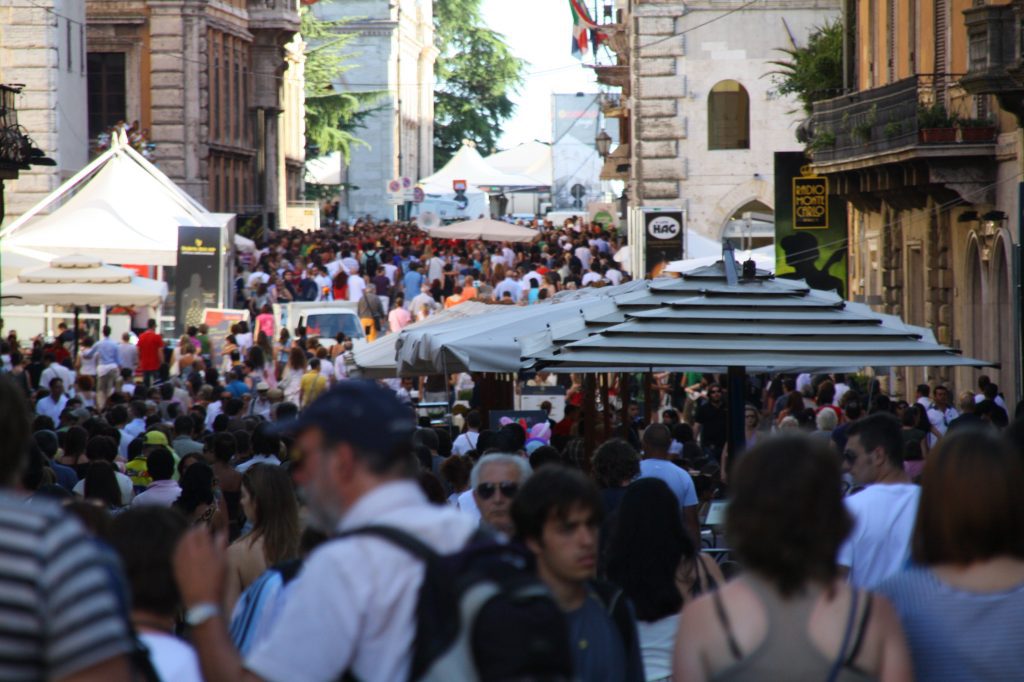
Perugia
Submitted by Annabel Kirk of Smudged Postcard
As the capital of Umbria, Perugia is an essential stop on any itinerary of Italy’s green heart region. The city boasts artworks by many Italian masters in its Galleria Nazionale dell’Umbria, including Piero della Francesca. Perugia’s central piazza, IV Novembre, is packed with impressive Renaissance architecture along with a dramatic fountain by Tuscan sculptors Nicolo and Giovanni Pisano.
Fanning out from the centre are medieval streets as well as remains of the city’s Etruscan past. Beneath the cathedral is an archaeological museum which traces Perugia’s extensive past.
Perugia is at its most enjoyable in July when it hosts Umbria Jazz. This popular festival sees bands, buskers and groups fill the streets with music. Another highlight is a visit to the Perugina chocolate factory — home to the famous Baci chocolates. There are tours available in English.
Where to Stay in Perugia: Visitors to the city who wish to stay in the heart of the action should head to Locanda delle Posta, situated on Corso Pietro Vannucci. This famous street is perfect for people watching and is lined with cafes. To get a true taste of Umbria, however, it’s worth considering a stay in one of the rural agriturismo, of which there are many just outside Perugia.

Bolzano
Submitted by Kate of Our Escape Clause
Surrounded by seemingly endless vineyards – not to mention the snow-capped Dolomites – the crisp and colorful city of Bolzano is easily one of the most unique cities to visit in Italy.
As the capital of South Tyrol, Bolzano (or in German, Bozen) has been part of Italy since the end of World War I in 1918, but it retains much of the Austrian culture and language that are the heritage of its centuries of being settled by primarily German-speaking people.
The result today is a delightful mix of Italian and Austrian cultures, along with a little something that sets Bolzano apart as a world all its own.
When visiting Bolzano, it would be easy to head immediately to the mountains – but be sure to take the time to see charming Piazza Walther, step inside the Duomo di Bolzano, and browse the market stalls in Piazza delle Erbe while you’re there.
Above all, the most unmissable attraction in Bolzano is one very old and famous man: Ötzi, the shockingly well-preserved “Iceman” who lived 5,000 years ago and is the oldest human mummy in Europe (that has been found so far, anyway).
Since 1998, Ötzi has called the South Tyrol Museum of Archaeology home, and visiting him and the artifacts found with him is one of the best things to do in Bolzano!
Outside of the city center, soaking up the views from the Santa Maddalena Church, taking the funicular to Soprabolzano, and visiting Castel Roncolo (also known as Runkelstein Castle) are delightful ways to enjoy the natural beauty surrounding Bolzano.
Where to Stay in Bolzano: For ease of visiting the attractions in town, staying near Bolzano’s city center is best, and the well-reviewed Parkhotel Laurin couldn’t have a better location!
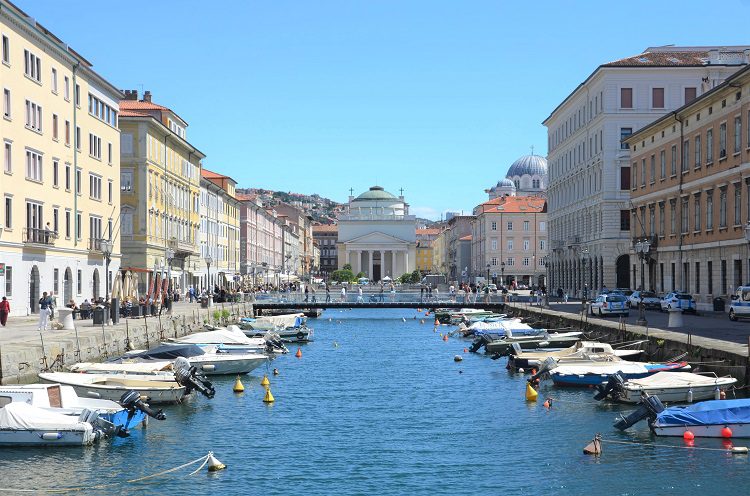
Trieste
Submitted by Cosette of KarsTravels
Trieste is a beautiful city on the border with Slovenia in Northern Italy. Trieste has, due to its location, always been at the confluence of many cultures, as such it’s a must on a 6 week European road trip.
The city is known as the coffee capital of Italy, the brand Illy has its origins in Trieste and is served all over the city. You can get a good cup of coffee anywhere in the city, however the Caffè San Marco is a must for coffee lovers and historical enthusiasts. It was founded in 1914 and was a famous place for intellectuals to get together.
This port city also houses the largest square in Europe harboring the sea. The square is surrounded with palaces on three sides. However, this is only one of the many beautiful large piazzas the city has to offer. Wander around the city to admire the piazzas and palaces. Stop at the Canal Grande which dates from the 18th century and has the Ponte Rosso. A pedestrian bridge that crosses the canal. Visit the Castello di Miramare, a beautiful white palace on a cliff on the coast.
At last make sure to try some gelato in Trieste, the crema carsolina flavor at Gelato Marco is delicious!
Where to Stay in Trieste: Hotel Roma in the neighborhood Theresia is a good place to stay. It’s outside the main tourist area, but still close enough to the main attractions. There’s a bus and train station within walking distance, making it a good option when you have luggage.
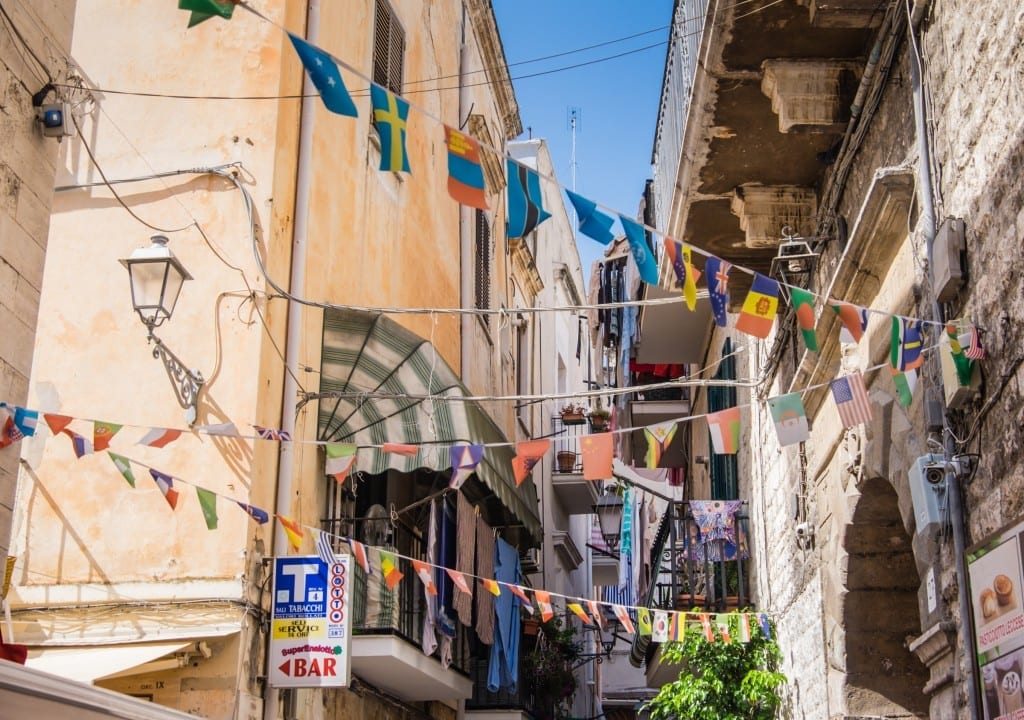
Bari
Submitted by Jasmine of The Life of a Social Butterfly
Bari, Puglia’s capital, is a great place to start a Puglia road trip, thanks to its international airport and port connections. Though, sadly this vibrant city is often overlooked and not properly explored by visitors.
Whilst the transport connections here are undoubtedly good, Bari has a lot to offer as a tourist destination and makes a great base for exploring southern Italy.
Bari has good food, intriguing history, a castle and a cathedral, as well as a medieval old town, known by locals as Bari Vecchia, which is built on a peninsula perched over the Adriatic Sea. The Old Town is where you will see shrines decorated with flowers and find Orecchiette Street, where sweet local ladies hand-make Puglia’s famous orecchiette pasta, nicknamed “little ears.” There are some authentic hidden restaurants to be uncovered in this area.
Not only is Bari the second largest city in southern Italy, but it’s also a coastal city. Explore the Murat Quarter, Bari’s modern shopping district before strolling along Lungomare Nazario Sauro, which gives you the best views along the Bari promenade.
In fact, why not make use of Bari’s excellent transportation and set sail along the coastline on a scenic sunset cruise, which will ultimately give you the perfect welcome to Italy before exploring the rest of Puglia.
Where to Stay in Bari: If you’re looking to stay in Bari, check out Sisuites unique apartments, located in a 19th Century Italian palazzo, and is walking distance to the historic centre.
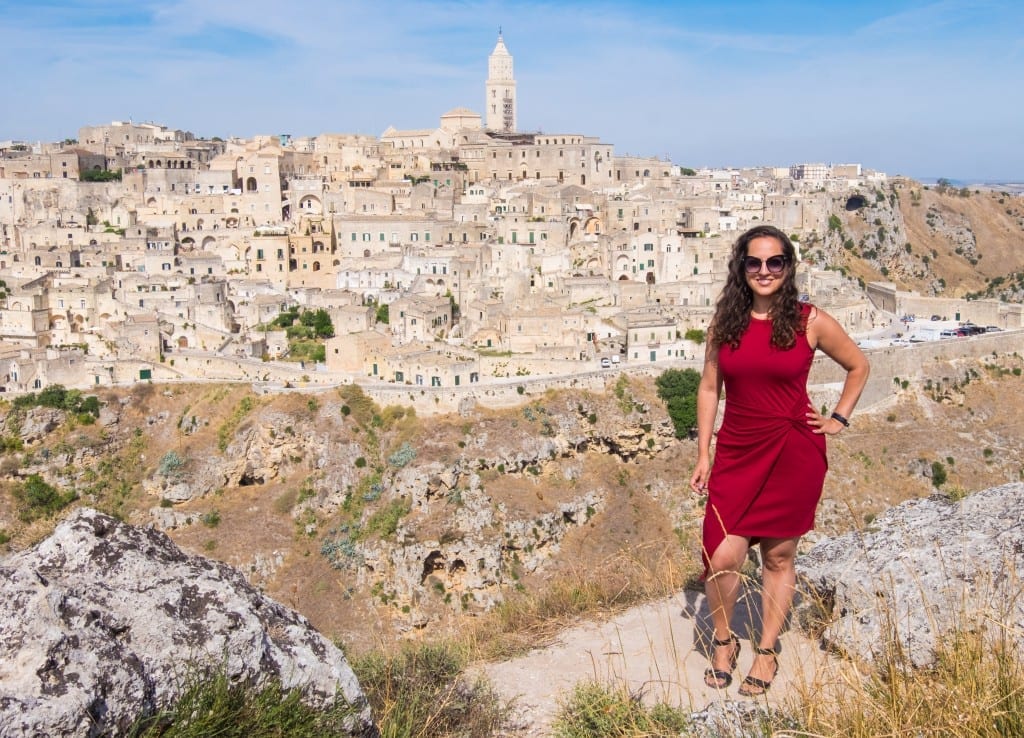
Matera
Submitted by Christine of Italy in Focus
Nestled in the heart of southern Italy’s stunning Basilicata region, Matera stands as a mesmerizing testament to the enduring human spirit and the marvels of ancient architecture. With its unique allure and rich historical significance, Matera has rightfully earned its place as a must-visit destination for travelers seeking an extraordinary experience.
A lot of people might not have heard of this UNESCO Heritage Site but you have probably seen this place in several Hollywood movies including The Passion of the Christ, Wonder Woman (2017), James Bond’s Quantum of Solace, and many other movies about Christianity and Catholicism.
It was also once called the “Shame of Italy” as the people here used to live in the caves in extreme poverty and very poor condition (poor sanitation, no electricity and running water and rampant disease). Today, people no longer live in the caves — though may have been turned into high-end hotels.
Matera is famous for its sassi, or ancient cave-dwelling settlements said to be over 3000 years old. Matera is also one of the oldest continuously inhabited cities in the world. Walking through the narrow labyrinthine streets is one of the best things to do in Matera. The city’s intricate network of alleys, staircases, and hidden courtyards invites exploration, revealing the secrets of Matera’s storied past at every turn.
Where to Stay in Matera: I had the opportunity to spend my birthday week in Matera and there’s no better way to experience the city but to stay in one of the cave hotels within the Sassi. Nestled within the enchanting cityscape of Matera, L’Hotel In Pietra emerges as a true gem, seamlessly blending modern luxury with the rich historical tapestry of its surroundings.
As its name suggests, L’Hotel In Pietra, meaning “The Stone Hotel,” immerses guests in Matera’s distinctive stone architecture. Each room is carefully carved into the natural rock formations, preserving the authentic charm of the ancient caves while providing modern amenities and elegant furnishings. The result is a serene and intimate atmosphere that transports visitors to another time, where history intertwines with contemporary comforts.
Planning a Trip to Italy:
- What NOT to Do in Italy
- Solo Female Travel in Italy: Is it Safe?
- Ultimate Guide to Driving in Italy
- How to Stay at an Agriturismo in Italy
- 30 Stunning Mediterranean Islands To Visit In Your Lifetime
Cool Places in Northern Italy:
- Three Weeks in Northern Italy: An Itinerary
- Parma, Italy: A Colorful, Artsy, Delicious Town
- Where to Stay in Rome: Best Neighborhoods and Accommodation
- Three Days in the Dolomites: A South Tyrol Getaway
- Best Day Trips from Florence, Italy
- The Immaculate, Bursting Mosaics of Ravenna, Italy
- 25 Best Food Experiences in Emilia-Romagna, Italy
Cool Places in Southern Italy:
- Tropea, Italy: A Spectacularly Situated Beach Town
- The Stunning Trulli of Alberobello, Italy
Planning a Trip to Sicily:
- The Joys and Challenges of Traveling in Sicily
- Where to Go in Eastern Sicily
- What to Eat in Sicily: Best Sicilian Food Specialties
- 23 Fun Things to Do in Palermo, Sicily
- Complete Guide to the Aeolian Islands, Sicily
- Aci Trezza: A Laid-Back Coastal Town in Sicily
- Visiting Sicily in the Winter: Worth it or not?





